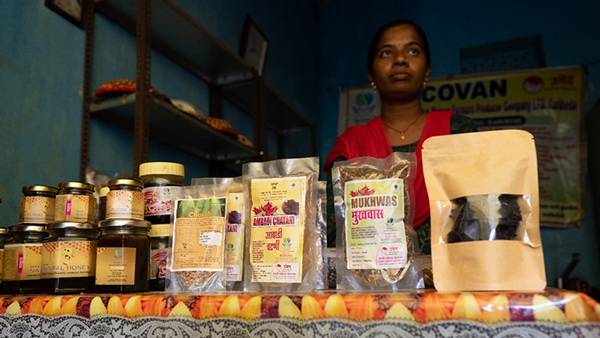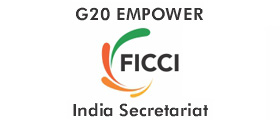Packets of Jamun (Indian blackberry) and Sitafal (custard apple) pulp are stacked in the deep-freezer. The Blackberry has just been processed. Custard apples will be in season soon.
Meanwhile, there’s an air of excited activity in the hall of a processing unit run by a federation of village level women’s Self Help Groups, called Sangini, in the village of Ramgarh, in the tribal hinterland of Gadchiroli in Maharashtra.
“After two years of Covid-19 our sales prospect looks bright this year,” Pratidnya Meshram, 33, says. “We are quite hopeful of good profits this year.”
Pratidnya, an MA in economics, is the only post-graduate in the Sangini Mahila Gram-Sangh, of which she’s Secretary and de facto accountant. Various other members handle the responsibilities for the machinery and the processes of pulping and packaging.
‘Sangini’, a part of the Maharashtra State Rural Livelihoods Mission (MSRLM) christened ‘Umed’ (or Hope), started a few years ago by bringing together around 32 Self Help Groups in Ramgarh. These Self Help Groups, along with those in the surrounding villages of Kurkheda and Korchi blocks, collect wild berries and custard apples from their forests, or the designated community forest areas (CFRs). Sangini buys them from the groups and process the fruits into pulp, before selling it to big buyers.
Sangini’s pulp-making unit is one of the several such processing centres run only by women-led groups in Gadchiroli, leveraging the minor forest produce they harvest collectively round the year. Ramgarh works on Jamun and Custard Apple. Jambhulkheda, a village in another block, works on honey and Chironji. There are also units that process Tendu-Bamboo. Once the women have been mobilised and attended capacity-building trainings, the Livelihoods Mission programme provides funds and grants to start a unit.
Umed’s institutional design is robust. A bunch of 10-11 women form a Self Help Group. A village would generally have more than one of these groups, which are then merged into a Gram Sangh, or village organisation. Ramgarh for instance has 32 Self Help Groups, with 365 women members.
About 15 such Gram Sanghs federate to form a cluster. So, a larger group of 3,000-4,000 women become part of it, with a few members representing their Gram Sanghs on the clusters. Finally, these clusters together float a Producers Company, to market the products of the Self Help Groups and their clusters. Sangini markets its pulp directly to the buyers and through the producers’ company, under the brand name ‘EcoOne’.
“About 1,450 villages in Gadchiroli have won the community forest rights under the Forest Rights Act, and since forest occupies two thirds of the land, major livelihoods of people come from the minor forest produce,” says district collector Sanjay Meena. As part of the Aspirational District initiative, the administration’s focus on livelihood and community enterprise development therefore focusses on the forests with women as the driving force.
Ramgarh, which was once just an obscure dot on the map, has now become a case-study of women’s grassroot leadership and empowerment.
 |
 |
 |
These stories of women-led development have been compiled by UN Women India. All copyrights to the stories and images are held by UN Women India Country Office dated December 2022. |

